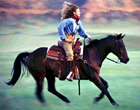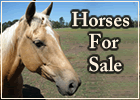

Why Use the Bit
Hi Ed
The question I would like to ask, is if everything in done is such a beautiful and natural way, why are the bits still being used in the horse’s mouth. There are proven ways that horses are trained and ridden without the bit. Why do you personally, as a trainer, still use the bit I have respect for you. I would just like to have a better understanding.
Hi Shannon,
Thank you for contacting me. You have a very legitimate question and I will be happy to address it. There is definitely a place for bitless riding as well as riding with a bit in the completion of training for horses. When I am starting a young horse I ride the first few rides with only a simple rope halter. After that I ride for the first few weeks or even few months with a soft leather bosal / hackamore in the style of the 18th century Spanish vaqueros. I want to protect and preserve a young horse’s mouth while the horse is learning to work within my reins and is becoming soft to my hands and flexible in the neck.
Later in training, once the horse has learned to give softly to my hands then I move to a smooth, pinchless snaffle bit in order to achieve more precision, a lighter communication and more refinement of response and head carriage. The bit allows the communication to be clearer with my hands doing less. There is no pain involved whatsoever. I am never pulling on the bit. It simply hangs in the horse’s mouth in such a way as the horse feels every tiny movement of my fingers as a quiet, private conversation signaling the horse for the next movement. In upper level riding in which we are riding for precision, refinement and accuracy the light touch of the bit allows me to keep the line of communication open with my horse and we can become close partners dancing together. For the ultimate example of this level of quiet refinement, I invite you to watch the horses and classical riders of the Spanish Riding School of Vienna.
The bit also allows the experienced rider to help the horse release its jaw. When the horse tightens its jaw it creates stiffness throughout the horse especially in the poll and upper neck. When I feel the horse tighten I can gently massage the bit from my hands on the reins to cause the horse to work his mouth thus releasing the tension in the jaw which relaxes the horse.
The bit is not an evil torture device. On the contrary, in the educated and light hands of a caring rider the bit can actually become comforting to the horse giving him a direct and sensitive connection to his rider, his partner and leader of the dance.
Enjoy the Journey,

Ed Dabney is an internationally acclaimed clinician, presenting horsemanship and riding clinics all over the US and in Europe. In 2007, Ed was named Champion of the East Coast Trainer Challenge Series by Equine Extravaganza. Ed was honored to have been selected by the University of Georgia to teach their senior level Young Horse Training course.
His training articles have appeared in many major national magazines. Ed produces instructional videos and the “Gentle Horsemanship” TV program which has been seen on RFD-TV.
Ed's blending of natural horsemanship and classical equitation has made an indelible mark with students all across the United States and now also in Europe, drawing the attention of serious riders searching for the lightest touch and the deepest connection with their horses irrespective of breed or discipline.


